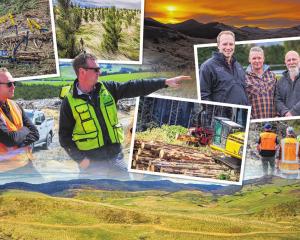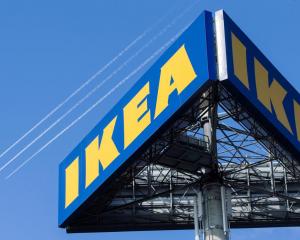
The company has begun a capital raise to add more processing equipment and turn more wool and hemp into building, interior decorative, biocomposites, clothing, textile, furnishing, geotextile and other products.
Formerly known as New Zealand Natural Fibres, Rubisco’s majority shareholder is family-owned Carrfields, which has bought the facility and leased it back to the hemp company.
The Ashburton site will process the first stage of breaking down raw hemp bales.
Fibres are separated from hemp stalks in a decortication process to prepare them for a range of industrial applications and the inner woody hurd and dust goes into a primary product.
About half the machinery for this has already been moved from a Burnside facility in Christchurch for it to become fully operational by early next year.

Chief executive officer Guy Wills said Rubisco was now in a position to scale up production and continue innovating.
He said increasing demand for sustainable materials and the natural fibre had driven the relocation of its raw hemp processing. The Burnside facility could not keep up with processing needs and the new site was expected to at least double production, he said.
"This really supports our roadmap for growth, having operations close to where hemp is grown, with the extra space allowing us to process large volumes of raw material. In Christchurch, the processed hemp from Ashburton will be converted into textile-grade materials at our high-quality finishing area, where further expansions are under way, while the raw processing will occur closer to the source in Ashburton."
He said this would streamline the supply chain.
Raw hemp was supplied by Canterbury growers via Carrfields.

Mr Wills said the demand for sustainable and renewable fibres was accelerating globally.
"Hemp is recognised for its versatility and environmental benefits. The fibres and hurd extracted from the hemp plant can be engineered into a diverse array of products. As industries worldwide seek to lower their carbon footprint and adopt greener practices, the applications for hemp-based materials are expanding rapidly."
He said Rubisco was New Zealand’s only hemp fibre company with full control from the field to finished products.
The company wanted to accelerate the advance of regenerative and sustainable materials globally, he said.
As well as making its own products, materials were supplied to other companies.

A range of products included pet and animal bedding, while Rubisco’s geo-textile matting co-branded as Futurfibre, sold locally and in Australia, was made from wool and hemp for erosion control and suppressing weeds.
"There is growing demand because it’s 100% natural, has no micro-plastics and can just degrade in the soil and provide nutrients back after stabilising the soil."
Orchards and sustainable growers were also using the matting for growing and mulching.
A biocomposite made from hemp had been used to make sporting goods and a new range was about to be released as an alternative to fibreglass, he said.
Solid building blocks and panels were made from hemp hurd and bio-mineral binder for house construction.
Rubisco had yarn systems combining strong wool and merino for luxury carpets, apparel and textiles and the plan was to develop hemp hybrids with wool for full-scale production by mid-2027.

The next phase of the expansion would move into more advanced textiles, bio-composites and fibre processing at Burnside, he said.
"The beauty of hemp is it is a very low-impact plant. In many cases little or no pesticides or insecticides are needed as it forms a canopy which fights against weeds and uses low water. For example, cotton uses two and a-half times the amount of water as hemp."
Hemp grows to 1.5 metres to 2m in height and is harvested within 80 days of planting.
Mr Wills said he became involved in hemp as a father later in life to twins after a career working in emerging biotech, agritech and clean-tech technology.
He had often seen promising ideas get stuck in labs or watered down into "greenwash".
"I didn’t want to just talk about sustainability. I wanted to build something real — something that would still hold up when my daughter and son are grown."














